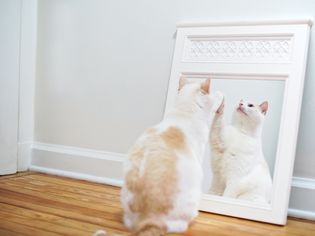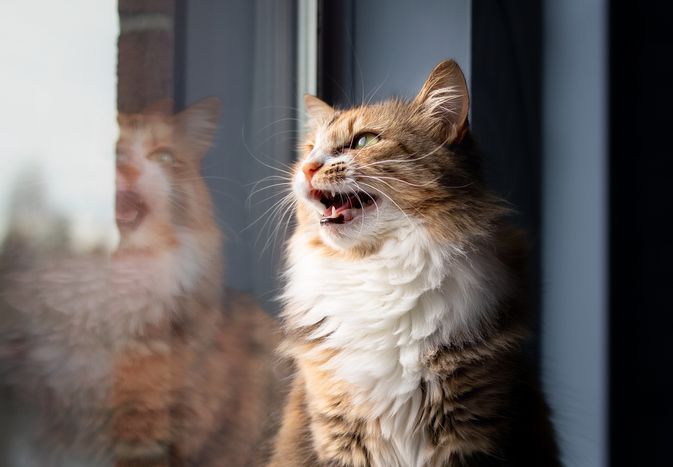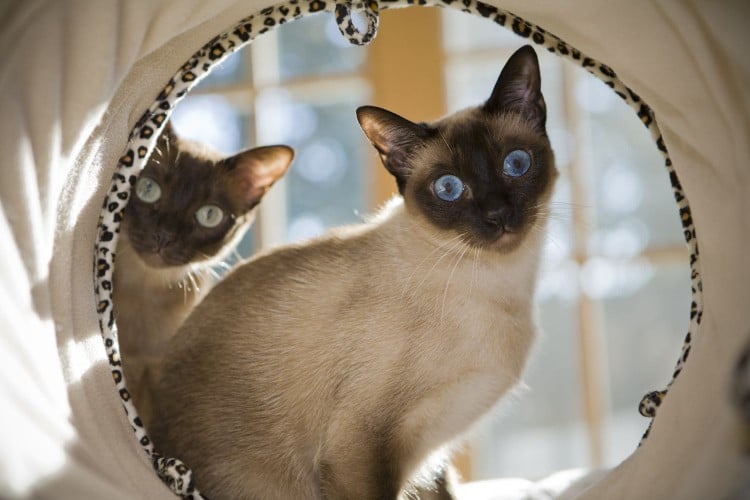Feline Hyperesthesia Syndrome (FHS), commonly called rippling skin disorder, can be mistaken for normal crazy behavior in cats. However, it's a syndrome that may require treatment. Tuning in to the symptoms, such as skin twitching, abnormal vocalizations, and erratic behavior will help you and your veterinarian identify the need for medical intervention.
Learn more about Feline Hyperesthesia Syndrome and its common treatments and prevention methods.
What Is Feline Hyperesthesia Syndrome?
Feline Hyperesthesia Syndrome (FHS) is a disorder in which the characteristic symptom is rippling or shuddering skin (particularly on the back, near the base of the tail). FHS also manifests as behavioral abnormalities that are even more concerning, such as excessive vocalization and generalized agitation.
Symptoms of Feline Hyperesthesia Syndrome
To track symptoms that may indicate FHS, consider documenting the frequency of twitching or odd behaviors, such as:
- Involuntarily rippling or twitching of the skin, particularly on the lower back, accompanied by biting and scratching at the affected area
- Loud and insistent meowing (often at night)
- Dilated pupils, glassy eyes
- Erratic racing in circles or back and forth
- Extreme sensitivity and discomfort from petting or any physical contact
- Seizures
Causes of Feline Hyperesthesia Syndrome
The exact cause of Feline Hyperesthesia Syndrome is often unknown. Because of this, FHS has been categorized as a behavioral, neurological, and/or skin disorder. While any cat can be affected by it, Asian breeds such as the Siamese, Burmese, Abyssinian, and Persian tend to be diagnosed more frequently. Most cats affected by Feline Hyperesthesia Syndrome start to exhibit symptoms between one and seven years of age. Possible triggers include:
- Pansteatitis: Pansteatitis is an inflammation of body fat. This condition can be caused by vitamin E deficiency or an excess of unsaturated fatty acids from a high-fish or imbalanced homemade diet. The uncomfortable fatty deposits create hypersensitivity in the thorax and abdomen, and a cat's skin may twitch or ripple as a result.
- Brain involvement: If a cat with FHS experiences seizures, the cause may stem from the brain. A veterinarian may recommend an MRI and spinal fluid testing to rule out other brain issues like infection or tumors.
- Skin issues: Itchy skin due to allergies could be cause for erratic behavior in cats. This includes flea allergies, which may be relatively easy to rule out by examination of the skin under the coat.
- Environmental changes: Changes like new homes, new pets, or people can cause enough stress to trigger behavioral changes. Stress can also lead to OCD (Obsessive-Compulsive Disorder) in cats.
Diagnosing Feline Hyperesthesia Syndrome in Cats
Diagnosis of FHS is often a process of elimination. A veterinarian will often look for evidence of skin disease, trauma, or underlying health conditions before making a diagnosis. Because this condition is so often idiopathic (no known cause), your doctor may recommend dietary and environmental modifications before opting for more diagnostic tests like an MRI. Of course, if seizures have been noted, then neurological tests may be recommended.
Treatment and Prevention
A cat with FHS can be helped at home by relieving stressors along with providing exercise-based activities, such as interactive play with wand toys. Clicker training, a very effective and fun behavioral modification approach, may be used to stimulate a cat's activity level and alleviate anxiety.
Removing negative influences and exposures, such as other aggressive pets or loud noises, can help. A diet change to a hypoallergenic diet may be tried in cats with known or suspected allergies. Effective flea control is a must.
Anti-convulsant medication such as phenobarbital may occasionally be prescribed for the FHS cat that experiences seizures, or low dosages of mood-stabilizing drugs may be prescribed to help calm a cat.
Although a cat with FHS may never be entirely "cured" with modifications or medication, you can work with a pet behaviorist to help your cat feel happier and more comfortable.
Prognosis for a Cat with Feline Hyperesthesia Syndrome
The quality of life for a cat with FHS depends on the cause of the condition. The goal of treatment is to make a cat more comfortable. If a recommended treatment does not seem to be working, a follow-up with a veterinarian is recommended.









Comments on " Feline Hyperesthesia Syndrome (FHS) in Cats" :